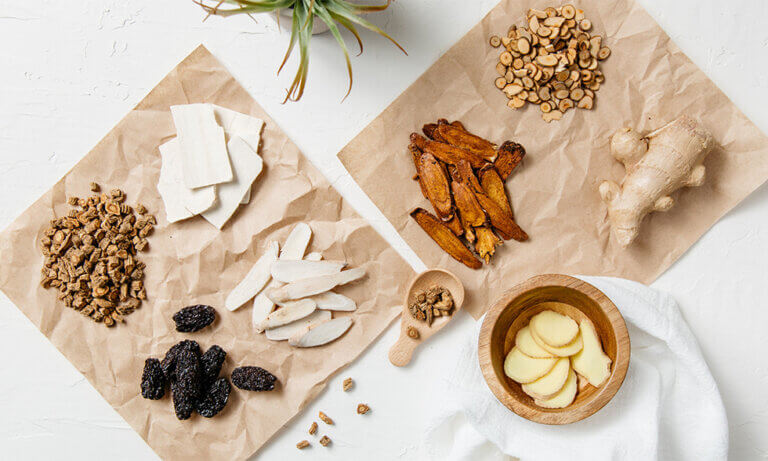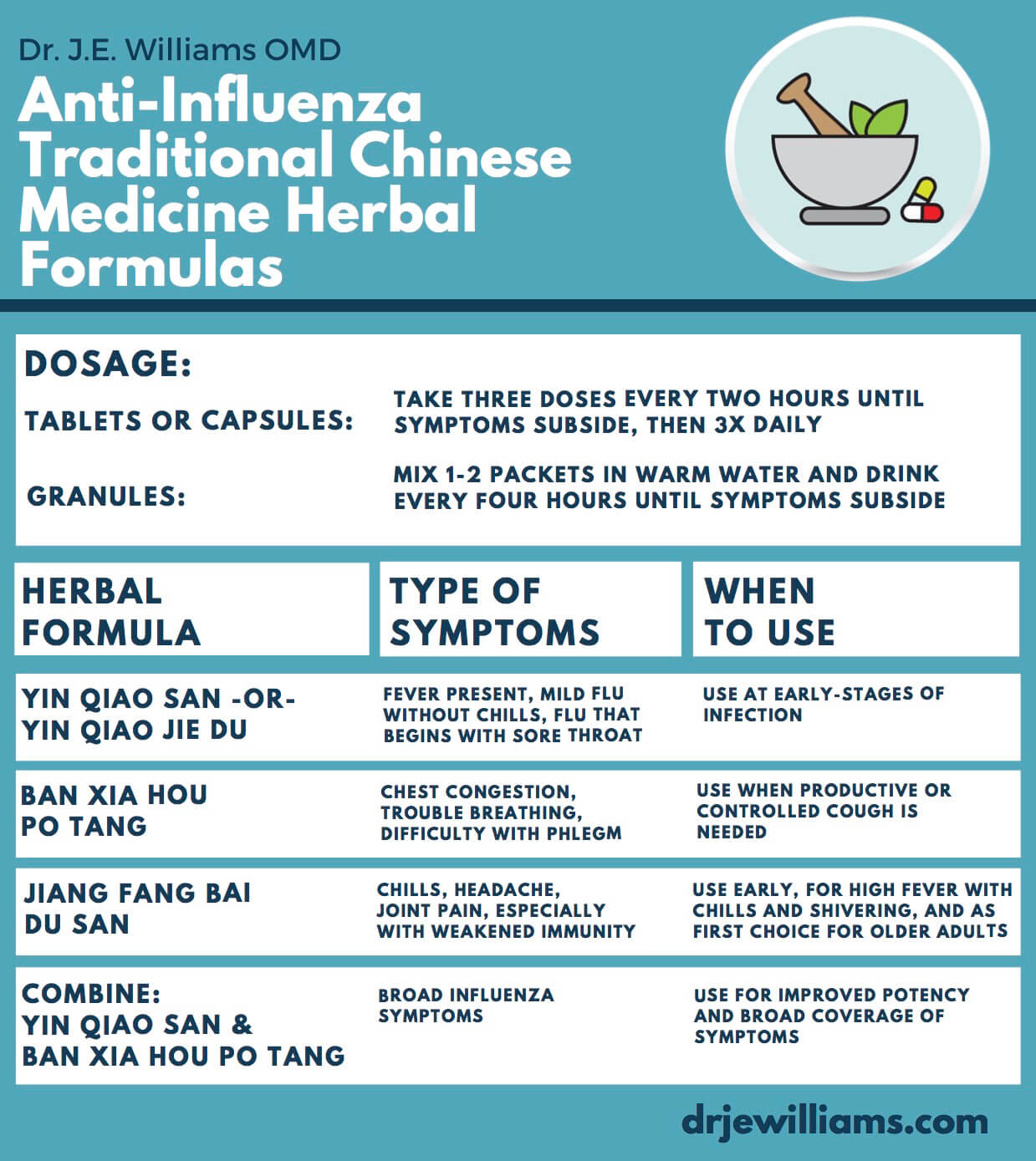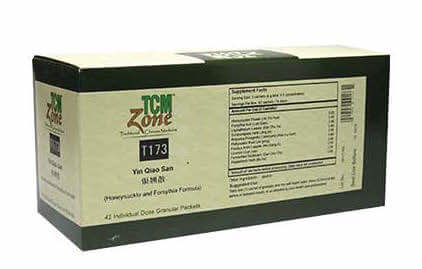The 3 Chinese Medicine Treatments for Beating the Flu (Part III of III)
Influenza is endemic to China, so it makes sense that Chinese medicine would have the most experience in treating the flu.
| | Reading Time: 7 minutes

Traditional Chinese medicine (TCM) developed more than 2,500 years ago. Over millennia, traditional doctors gained practical insights about what plants and combinations worked best. But, experience alone isn’t all that matters. Western medical science is testing traditional Chinese herbs for the treatment of influenza.
Modern Chinese Medicine
Modern Chinese medicine is in a renaissance. Funding for research is supported by the Chinese government, hospitals, and flows in from private funding. Western countries are also interested in the flu-fighting properties of Chinese herbs. An EU-China consortium of 200 European and Chinese scientists was started in 2009 to work jointly on best practices for herbal medicine research.
Since 2009, the Chinese government established 16 TCM clinical research centers. The aim is to create a better evidence-based model for the use of herbal therapies. The goal is to find ways of integrating modern Western medicine with TCM.
A 2011 guideline paper details Western and traditional Chinese herbal treatment for influenza. The emphasis is on a scientific understanding of influenza infection using Western medical intervention and therapies while integrating TCM formulas.
TCM and the SARS Outbreak
SARS taught us a lot about how a microbe from a family of viruses that causes the common cold can mutate into a fast-spreading killer. Influenza epidemics are in many ways similar. Seasonal flu strains can mutate to pandemic proportions that spread fast and have a high death toll.
Once a pandemic is in motion, there is no time to develop a vaccine. We have no choice but to use the best course of treatment and the medicines, including herbal formulas, that we already have. Seasonal flu is different. We know it’s coming.
Clinical studies during influenza epidemics and the SARS outbreak of 2002-2003 found that traditional Chinese herbal preparations worked as well as Western antiviral drugs like oseltamivir. But, patients treated with a combination of Chinese and Western medicine did even better. Their fever went down faster, and they got better quicker than with either treatment alone.

The Evidence for Using Chinese Herbs
Chinese herbal formulas block viral entry into the respiratory system by enhancing mucosal immunity. Chinese herbs inhibit viral shedding and slow replication. They reduce inflammation by suppressing inflammatory cytokines like interleukin-1 alpha. Herbal remedies also have antioxidant effects helping minimize cell damage caused by inflammation.
A Cochrane review of the effectiveness of Chinese herbs for the common cold analyzed 17 trials, involving 3212 subjects. The results found that Chinese herbal medicines can shorten the symptomatic phase.
A 2012 double-blind placebo-controlled study of 327 subjects in Hong Kong found that those who used Western cold medicines including antihistamines, paracetamol, or used decongestant nasal sprays recovered slower than those who took Chinese herbs.
They also found that although traditional Chinese formulas like yin qiao san and jiang fang bai du san – commonly used classical formulas for the flu – didn’t speed recovery, they were significantly helpful in managing symptoms.
In 2015, a review found that lonicera (jin yin hua) possesses pharmacological effects, including antibacterial, antiviral, anti-inflammatory, antitumor, and antioxidant actions. It seems that lonicera japonica – a type of honeysuckle vine that in some places is considered an invasive species – is also a potent antiviral.
A 2017 animal study found that the intravenous injection of chlorogenic acid (CHA) derived from lonicera inhibited H1N1 and H3N2 influenza by up to 60 percent. Chlorogenic acid is a dietary polyphenol compound that’s produced by many plants, including coffee. Robusta raw coffee beans have up to 10% chlorogenic acid. Green coffee bean extract has about 50% CHA. But, that doesn’t mean that coffee or tea can beat the flu. Even though CHA inhibits influenza viruses in the lab, the body is more complex. It takes a synergistic group of compounds to beat the flu, which is the way Chinese herbal formulas are designed.
3 Chinese Medicinal Formulas to Beat the Flu:
- Yin Qiao San – Lonicera/Honeysuckle and Forsythia Formula
- Ban Xia Hou Po Tang – Pinellia and Magnolia Formula
- Jiang Fang Bai Du San – Schizonepeta and Siler/Ledeboriella Formula, also called Tablet to Overcome Pathogenic Toxins.
A 2016 study found that Chinese herbal formulas including yin qiao san and ban xia hou po tang significantly decreased the risk for pneumonia in the study group. Lonicera is one of the active components in yin qiao san, but is not contained in ban xia hou po tang, so combining the two worked best.
“The art of beating the flu requires synergistically combining remedies from multiple fronts to inhibit the virus, promote healthy immune response, and recover sooner.”
The Chinese medicine ban xia is prepared from the rhizome of another invasive weed, Pinellia ternata. It treats a productive cough with thin phlegm. Hou po comes from a type of magnolia bark native to the hill country in China. It has anti-inflammatory effects that inhibit tumor necrosis factor beta, a molecule that drives the excess inflammation associated cytokine storm – rapid inflammatory changes in the lungs and other body tissues that cause extreme deterioration and death.
Countering Adaptation and Maximizing Response
The highly adaptable influenza virus quickly becomes drug resistant. Given the use of Chinese herbal medicines over thousands of years, why wouldn’t influenza virus also adapt to natural compounds as it has to pharmaceutical drugs?
The answer is in how nature evolves. Plants are organic chemical factories that produce complex mixes of compounds and molecules. Over time, plants adapt to environmental pressures and fine tune their disease responses. It’s the complexity that counts.
Beating the flu is an art that requires combining several remedies to control viruses from multiple fronts. Instead of a single herb or isolated herbal extract, traditional Chinese medicine (TCM) combines several herbs into formulas. This complex synergy mimics the way nature adapts and evolves. It dampens viral activity, rather than trying to kill it.
Ingredients in a Chinese herbal formulas have synergist activity. Those that treat influenza have anti-inflammatory action, antiviral activity, and exhibit an affinity for the respiratory tract.
Finding A TCM Practitioner
Only a well-trained, licensed TCM practitioner can skillfully match an herbal formula to your constitution and condition. However, some guidelines work for most people much of the time without an expert’s advice.
“A skilled practitioner of Traditional Chinese Medicine works herbal alchemy.”
TCM involves assessing intricate patterns with multiple relationships of symptoms and signs in the body. Expert practitioners match a classical Chinese herbal formula to the patient’s constitutional type and the manifestations of the illness. Though ancient, this form of analysis and therapeutic typing is akin to systems biology.
A skilled practitioner works herbal alchemy. After a detailed diagnosis, herbs are selected and masterfully mixed into a personalized prescription. You can find an expert in TCM in larger urban areas, principally in California and New York. 
However, evidence-based research provides insight into effectiveness and safety that you can use to treat yourself. A licensed acupuncturist or Doctor of Oriental Medicine can make a formula or dried herbs that you cook at home. And, Chinese prepared medicines in tablets are available in traditional Chinese herb and grocery shops.
However, I prefer concentrated extracts in granules. Modern forms of Chinese medicine come in sealed packets containing concentrated granules that readily mix in warm water. Or, in soft gels or capsules. Use companies that adhere to pharmaceutical GMP standards to assure quality and efficacy.
Tips on How to Use Chinese Herbs to Treat the Flu
If you’re healthy and catch seasonal flu, you’ll be better in five days. However, if you’re not getting better or feeling worse, you’ll need stronger medicine. And, if you experience severe symptoms in during the first three days, don’t wait. Start stronger treatment early.
As with all herbal medicine for acute illness, frequent dosing is important. When using tablets or capsules, take three every two hours until symptoms subside. Then take three times daily. For granules, mix 1-2 packets in warm water and drink every four hours.
Here are some tips on how to use anti-influenza Chinese herbal formulas:
- Yin Qiao San or Yin Qiao Jie Du is the best choice when fever is present. This formula is for mild cases of the flu without chills. Use this formula in the early-stages of infection. It is particularly useful if sore throat is one of the first signs of the flu.
- Ban Xia Hou Po Tang helps control coughing. It is useful for chest congestion, trouble breathing, and difficulty coughing up phlegm.
- Jiang Fang Bai Du San is best for chills, headache, and joint pain during the early stages of the flu. This formula is for high fever with chills and shivering. It’s particularly effective for those with weakened immunity. It may be used as first choice for older adults.
- You may combine equal parts of Yin Qiao San and Ban Xia Hou Po Tang. Combining formulas improves strength and assures broad coverage of symptoms.
Putting It Together
The first rule for beating the flu is that once inside the body, nothing “kills” influenza virus including Western antiviral drugs. Attacking a virus with antibiotics, as if it were a bacterial infection, is fruitless. A realistic goal is to suppress viral activity and at the same time support the body’s natural ability to defend against the virus to assure a speedy recovery.
The art of beating the flu requires synergistically combining remedies from multiple fronts to inhibit the virus, promote healthy immune response, and recover sooner. Chinese herbal medicine is an important addition to your toolkit for beating the flu.
Chinese herbs make for an effective alternative for beating the flu. If you have access to Chinese herbs, start taking them early.
In severe infections, as during an influenza pandemic, or in those with complications associated with influenza infection, medical support in a hospital could be lifesaving. Chinese anti-influenza herbal medicine is not appropriate for pregnant women, infants, or small children.
You’ll find detailed information on treating viral illnesses in my books, Viral Immunity and Beating the Flu. And make sure you read Part I and Part II of this 2018 flu season series.




